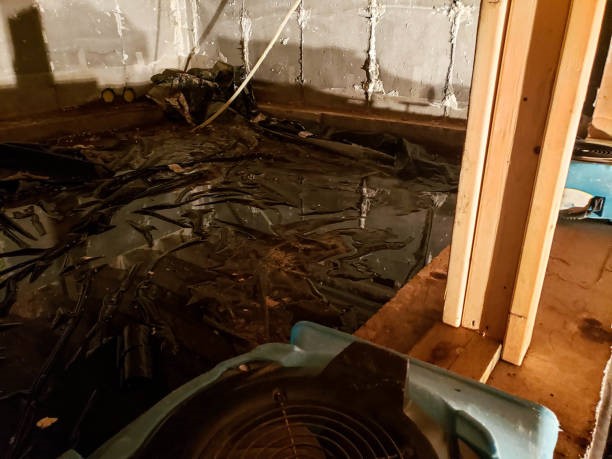Standing water in your crawl space can be alarming and stressful. But with proper guidance, you can address the issue effectively and protect your home’s foundation. Let’s go over safety precautions, water removal and drying methods, and other necessary measures when dealing with flooded crawl spaces.
- Ensure Safety Before Entering
Always treat personal safety as your first priority. Turn off the electricity to prevent electrocution hazards and don waterproof boots, gloves, goggles, and a protective face respirator. Only go in if deemed safe, and have another person on standby outside should an emergency occur.
- Identify the Water Source
Detecting the root cause of flooding is crucial in directing water removal efforts and prevention methods. Examine your home for heavy rain accumulation, poor drainage, cracked walls, loose vapor barriers, and downspout extensions directing water to the foundation.
- Drain the Water
If your crawl space is significantly flooded, use a submersible sump pump to extract water rapidly. A wet or dry shop vacuum can do the job in case of minor standing water or slight flooding. Although labor-intensive, you can also soak the water with mops, buckets, sponges, and towels.
- Remove Compromised Materials
Clear out insulation, storage boxes, tools, or debris touched and impaired by the standing water. If left damp inside, these porous items can grow harmful mold. Discard these items following proper waste disposal guidelines.
- Check for Damage
See if there are cracked foundations, shifting pipes, mold growth, or other structural damage. Take clear photos of detected issues to support insurance claims and repair estimates. Even if flooding seems minor at the start, detailed inspections can uncover any underlying problems.
- Dry the Crawl Space
When drying all affected surfaces, use high-velocity fans, commercial dehumidifiers, and direct heat sources, such as infrared lamps and heaters. Make sure the contained space’s windows and vents are open to facilitate sufficient airflow.
Monitor humidity levels with a moisture meter and dry the area continuously until moisture readings return to normal pre-flood ranges. If there is extensive water damage, drying can take over eight hours.
- Sanitize the Area
Disinfect all affected surfaces with a commercial antimicrobial product or a mix of bleach and water. Scrub the disinfectant after the recommended kill time. Doing so will help reduce the chances of dangerous mold colonies bacteria and forming.
Seek Professional Assistance
For major flooding incidents, sewage backups, persistent moisture issues, or extensive structural damage, contact qualified experts for help. They have commercial-grade equipment and the knowledge to fully dry out flooded crawl spaces and fix any underlying problems behind the seepage.
For more insights on addressing flooded crawl spaces, contact DryTek Crawlspace Solutions in Salisbury, Maryland. Our specialists can give your crawl space comprehensive care and protection against flooding.


